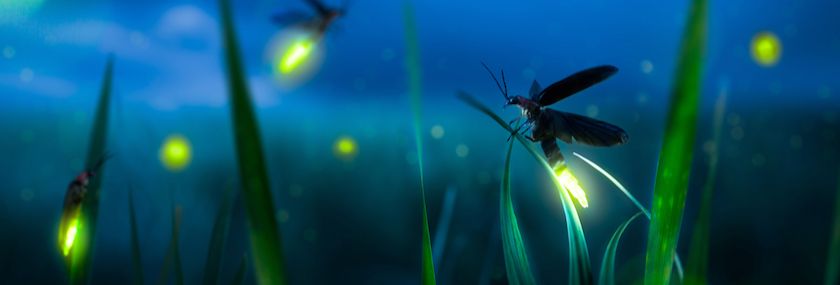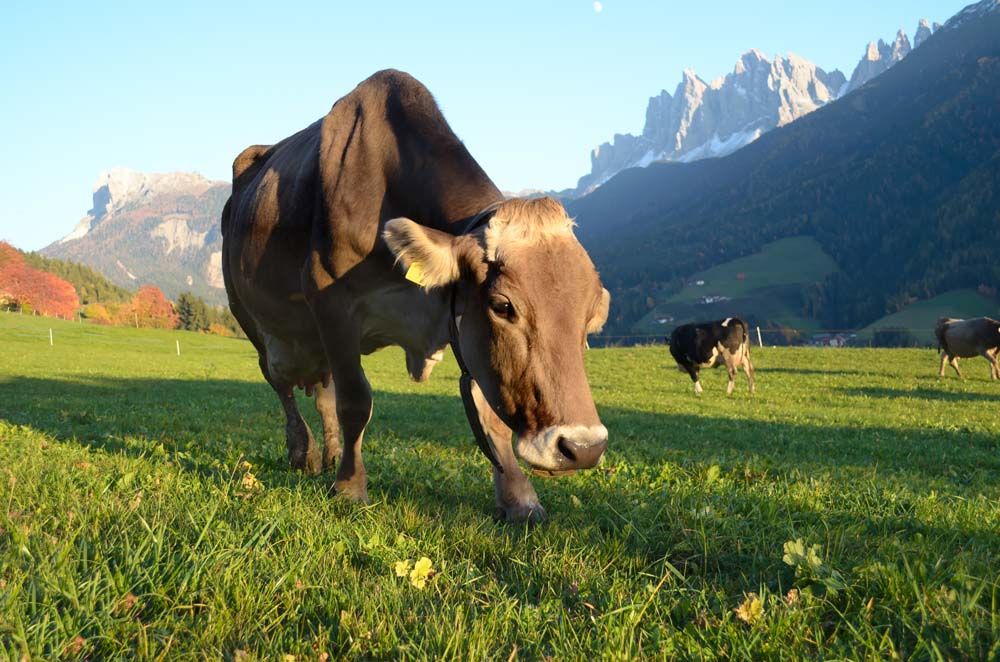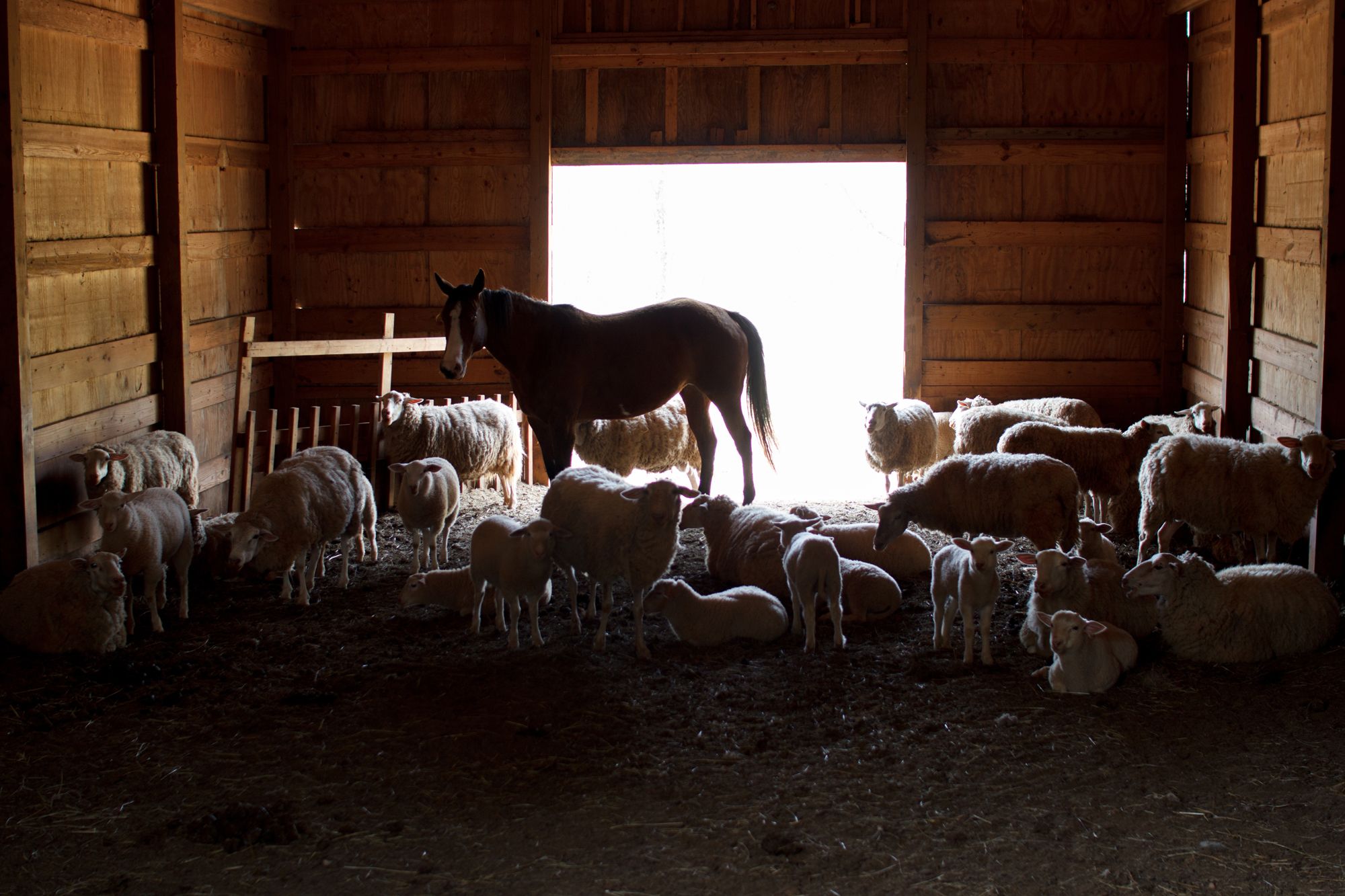Enjoying Nature’s Beacons


How to encourage fireflies on your farm
It’s one of summer’s most classic and memorable moments: fireflies, flickering against a backdrop of darkness—now here, now there—floating like bits of magic. We follow—cautiously, quietly—in joyous pursuit of these enchanting insects.
As fondly as we may remember the Mason jars of our childhoods and their sparkling inhabitants, today’s population of fireflies is decreasing due to a variety of factors. By providing the ideal habitat for fireflies, you can encourage them to take up residence on your acreage. Then you can eagerly await the day (night, actually) when they’ll once again illuminate your summers. Here’s how:
A happy habitat for fireflies
The ideal oasis for fireflies provides a place for the females to lay eggs, as well as a habitat for the larvae to grow and develop. It’s quite possible that your rural acreage might already have exactly what fireflies are looking for, but if not, you can take steps to make your property more welcoming by providing these elements:
Tall grasses and plants—A perfectly manicured lawn may look beautiful but it certainly doesn’t impress fireflies. That’s because they’re looking for tall grasses on which to lay their eggs, and neatly trimmed lawns do not provide this resource.
Fireflies like to sleep in tall grass during the day, which is another reason that they’re drawn to fields and meadows.
If you’d like to encourage fireflies, designate an area where the grasses will be allowed to grow without mowing.

A moist environment—Fireflies like humid conditions and they’re fond of damp areas around the edges of marshes, streams, bogs, ponds. These areas tend to attract snails, slugs, and worms, which are food sources for fireflies.
Logs, leaves, and brush—Firefly larvae thrive in an environment that includes decaying logs, leaf litter, brush, pine needles, and tree debris. The larval stage is a key element in the life cycle of the firefly; in fact, the firefly spends the vast majority of its life in this stage. So if you’re serious about attracting fireflies, you’ll need to be sure to provide the proper habitat for the larvae.
Planting trees, especially pine trees, is a helpful long-term goal, but for a short-term solution, try “leaving” some areas of unraked leaves, or provide an assortment of logs, branches, and brush to give the larvae a helping hand.
No pesticides or chemicals—Aim to provide your fireflies with a pesticide- and chemical-free environment, so skip lawn chemicals and other pesticides in areas near your firefly habitat.
Darkness—Fireflies like to create their own light, but they’re not particularly fond of your lights.
Light pollution may actually be one of the contributing factors in the decrease of the firefly population.
That’s because outdoor lights that shine at night can interfere with fireflies’ ability to use their own lights to attract other fireflies for mating. By providing a dark atmosphere in your firefly habitat, you’ll make it easier for fireflies to communicate and find each other.

Are they fireflies…or lightning bugs?
Actually, they’re beetles, but Americans are divided as to whether they’re called fireflies or lightning bugs. The terms are interchangeable, and their use tends to be driven by regional distinction—residents of the Western half of the United States and those in the Great Lakes region call them fireflies, while the lightning bug term reigns supreme in the Mid-Atlantic, South, and the Midwest.
There are said to be approximately 2,000 species of fireflies around the world, and over 150 species in North America alone. Three states—Tennessee, Pennsylvania, and Indiana—recognize the firefly as an official state insect. Indiana did not have a state insect until 2018, but students at Cumberland Elementary School worked diligently for four years to convince the state legislature to name Say’s Firefly as the official state insect.
An indelible memory maker
And the future can still be bright for these brilliant beetles! Regardless of whether we call them fireflies or lightning bugs, let’s do what we can to provide a habitat that attracts these delightful insects, ensuring that those classic summer memories continue for generations to come.
About the author
Samantha Johnson writes about the happy things in life—pets, home, family, food, and gardening—and thinks Mondays are the most wonderful day of the week. She fills her rare spare moments by crafting to-do lists and fulfilling the commands and demands of her bossy Corgi. View her portfolio at samanthajohnson.contently.com
Check out this incredible firefly habitat
Tags:Country Critters

Acreage Life is part of the Catalyst Communications Network publication family.
















